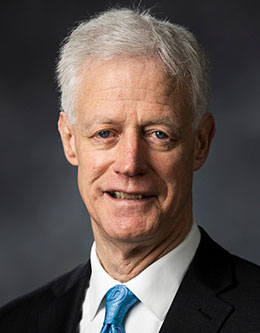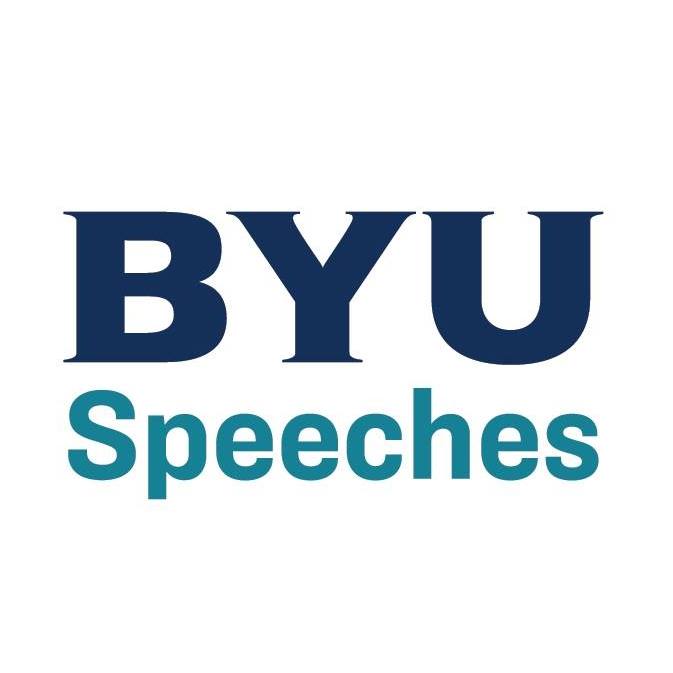This is a magnificent building constructed to further the study of the life sciences. The size and function of the building show how far BYU has come in this academic area.
What is now the College of Life Sciences first became a separate college at BYU in 1954 with the formation of the College of Biological and Agricultural Sciences. The first dean of the college was Clarence Cottam, who served as dean for only one year before accepting a position at a wildlife refuge in Texas.1 It is clear that Cottam left, in part, because his expectations for the new college were not being met. At the time of his departure, Cottam told President Ernest L. Wilkinson, “I would be less than honest if I did not express the personal view that I know of no university that is doing less with its opportunities in agriculture and biology.”2 That is hardly a vote of confidence in the future of the college.
Now look where we are. There are currently seven academic departments in the college covering a wide array of life sciences disciplines, and there are several centers—including one dedicated to the study of DNA sequencing and neuroscience—for disciplines that Brother Cottam likely never imagined. And, most of all, we have this wonderful facility designed with laboratory space and meeting areas that allow both faculty and students to engage in cutting-edge research. This building is a tangible and very large reminder that we really have come a long way in life sciences in the last fifty years.
But the building is only a structure with little to contribute, by itself, to the advancement of the purposes of BYU. The type of building that houses the College of Life Sciences is not nearly as important as the type of people who teach and study there.
With that in mind, let me share just a few thoughts about the person who really launched the endeavor that has become the College of Life Sciences—the person whose name was on the building that this building will replace: John A. Widtsoe.
Born in Norway in 1872, Widtsoe came to the United States at the age of eleven with his widowed mother—his father having passed away when he was six years old.3
Widtsoe had a world-class intellect. He graduated from Harvard in only three years4 with a degree in chemistry5 and a passion for applying that science to improve agriculture. He then went to Europe for his graduate degree, obtaining his PhD from a prominent university in Germany. After a stint at what is now Utah State University, Widtsoe finally responded positively to the repeated entreaties of President George H. Brimhall and came to BYU in 1905,6 becoming the first PhD-prepared professor at this institution.7
Widtsoe spent only two years at BYU, but his impact was tremendous. During his two-year tenure at BYU, he traveled the state “instructing farmers and recruiting students.”8 Working with his wife, Leah, who had earlier “founded the school’s domestic science program,”9 Widtsoe established “the first agricultural class for women in the West.”10 “[President] Brimhall reported that Widtsoe’s department was ‘having a wonderful educational influence in favor of our Church systems.’”11 As former president Rex E. Lee once observed, “Our first academic endeavor that attracted any attention beyond Utah County was in agriculture, under the leadership of John A. Widtsoe.”12
When Widtsoe left the university in 1907 to become president of Utah State (or the Agricultural College of Utah, as it was then known), many assumed his influence—and the agricultural department he founded—would quickly fade away. Amos N. Merrill, who succeeded Widtsoe as head of the Agriculture Department, “reported that the department was not very popular” once Widtsoe had left, citing as evidence “the fact that on the first day of registration, not a single [person] came to me to be registered.”13
But both the department and its founder’s influence on BYU would increase over the years. After serving as president of Utah State and later the University of Utah, Widtsoe was called as a member of the Quorum of the Twelve Apostles in 1921.14 At that time he began the first of two terms as the commissioner of Church Education.15 From that position he continued to guide and shape the destiny of this university.
During his life John A. Widtsoe did as much as any contemporary to establish the link between science and the gospel. With unparalleled spiritual and intellectual prowess and energy, he sought to erase the artificial distinction between scientific and religious truth. For him, the two were inextricably united. “As a soil chemist,” Truman G. Madsen related, “John A. Widtsoe [once reported] a laborious struggle trying to draw a mountain of data together and make it applicable. It did not work. [Discouraged,] he finally called his wife [and said,] ‘Let’s go to the temple and forget the failure.’ In the temple it [all] came. That resulted in two books and in a revolution in agrarian practice.”16 Widtsoe not only believed but demonstrated that learning can occur “by study and also by faith,”17 a proposition to which this university is completely committed.
Just as Elder Widtsoe had a revelatory scientific experience in the temple, we can, with the right spirit and approach, have a revelatory spiritual experience in this new Life Sciences Building if—as we are directed in Doctrine and Covenants 88:67—our eye is single to the glory of God.
John A. Widtsoe would no doubt be pleased with this remarkable new facility. But he would also remind us that, in the long run, what happens here and the attitude and spirit of those who study and labor here will be the most important factors in its future.
In 1930 Elder Widtsoe shared his prophetic vision of and confidence in the future of this great institution. He stated:
BYU has a great mission in these latter days. I have little fear about its future. The rumblings may always continue, but sooner or later the institution will be so firmly established that even an earthquake cannot undo it.18
This new Life Sciences Building is seismically much stronger and sounder than the Widtsoe Building it replaces. The spirit with which the faculty and students engage in their work can make it spiritually much stronger and more solid. May we work successfully to that end is my prayer, in the name of Jesus Christ, amen.
Notes
1. See Ernest L. Wilkinson, ed., Brigham Young University: The First One Hundred Years, 4 vols. (Provo: BYU Press, 1975–76), 2:650.
2. Clarence Cottam to Ernest L. Wilkinson, 21 June 1955, Wilkinson presidential papers; quoted in First One Hundred Years, 2:650.
3. See Alan K. Parrish, John A. Widtsoe: A Biography (Salt Lake City: Deseret Book, 2003), 16–18, 27–28.
4. He arrived in Cambridge on June 28, 1891, and graduated on June 27, 1894; see Parrish, John A. Widtsoe, 57, 76.
5. See Parrish, John A. Widtsoe, 61. In later years John Widtsoe told President Heber J. Grant that he decided on the chemistry major in part because it would enable him “to better understand and defend the Word of Wisdom” (Parrish, John A. Widtsoe, 61; citing Widtsoe to Grant, 20 October 1937, John A. Widtsoe Collection, LDS Church Archives).
6. In September 1904, George H. Brimhall wrote Widtsoe, “Many times I have said to myself and others, ‘How I wish Brother Widtsoe could be in the Brigham Young Academy’” (Brimhall to Widtsoe, 16 September 1904, Brimhall presidential papers; quoted in First One Hundred Years, 1:461).
7. See Parrish, John A. Widtsoe, 139; citing Mark K. Allen, The History of Psychology at Brigham Young University (Provo: BYU Psychology Department, 1975), 48.
8. First One Hundred Years, 1:461–63.
9. Parrish, John A. Widtsoe, 145.
10. Parrish, John A. Widtsoe, 145.
11. George H. Brimhall to Joseph M. Tanner, 8 December 1905, Brimhall presidential papers; quoted in First One Hundred Years, 1:461.
12. Rex E. Lee, “Of Circles, Bells, and the College That We Love,” BYU annual university conference address, 28 August 1989; quoted in Parrish, John A. Widtsoe, 137.
13. First One Hundred Years, 1:463; quoting Amos N. Merrill, “In Remembrance of President Joseph B. Keeler,” Joseph B. Keeler biographical file, UA 909, Box 99, L. Tom Perry Special Collections, Harold B. Lee Library, BYU, 3.
14. See Parrish, John A. Widtsoe, 276–77.
15. Widtsoe served as the second commissioner of Church Education (succeeding David O. McKay) from 1922 until 1925 and was appointed commissioner a second time in 1933; see Parrish, John A. Widtsoe, 357, 373.
16. Truman G. Madsen, “The Temple and the Atonement,” abridged from a lecture delivered in Saratoga, California, 16 October 1994, publications.maxwellinstitute.byu.edu/fullscreen/?pub=989&index=1; see also John A. Widtsoe, In a Sunlit Land (Salt Lake City: Deseret News Press, 1952), 177.
17. D&C 88:118.
18. John A. Widtsoe to Franklin S. Harris, 6 May 1930, Harris presidential papers; quoted in First One Hundred Years, 2:222.

Kevin J Worthen was president of BYU when this address was given at the dedication of the Life Sciences Building on 9 April 2015.


